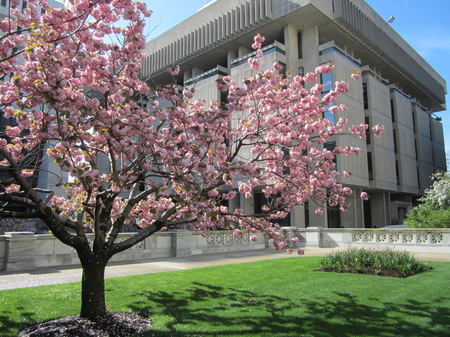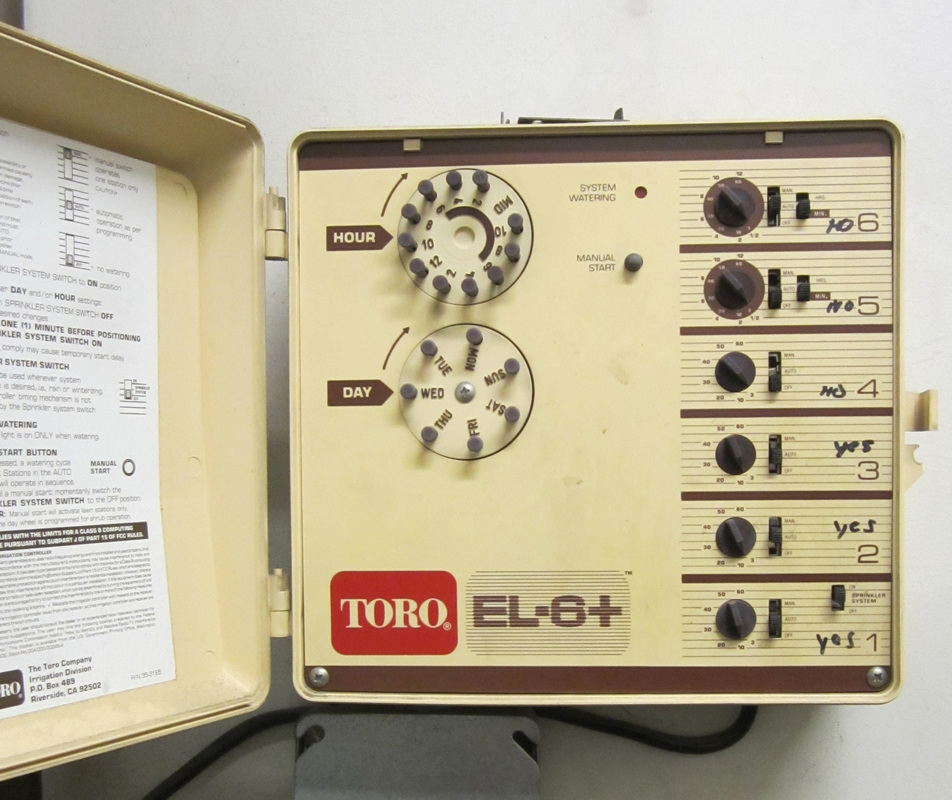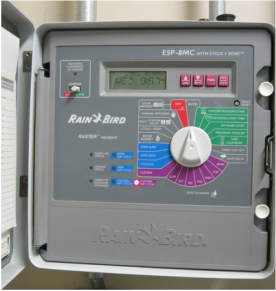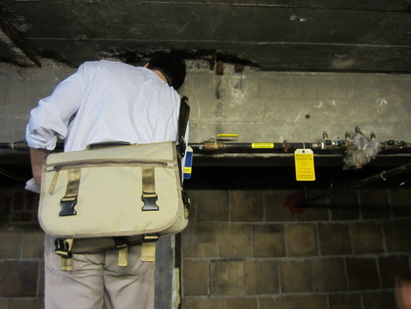Pretty, huh? So the basic goal is: Figure out how much potable water is being used to make the landscape look this nice, and how consumption can be reduced. I recently undertook a basic audit of a large, multi-zone irrigation system, and while the study is nothing ground-breaking, I figured I'd share the process for anyone who has ever shaken their fists to the heavens after seeing sprinklers on during a rainstorm, watering half the sidewalk, the sides of buildings, unsuspecting passerby, and practically everything but a scraggly postage stamp-sized piece of turf. Hopefully the post won't be too dry or watered-down. (Sorry, couldn't resist). Findings and recommendations will be shared as they're developed.
1. Inventory the types/location/numbers of plantings, delivery methods, the zoning for the systems, and the controls. For plants: location, how many, type, high/low water users? Delivery methods: spray heads or rotary heads (including efficiency, gpm, psi), drip irrigation? For controls: tied to a rain sensor or manual? Take note of old school controls (which don't account for the moisture of the soil) vs shiny new controls. The one on the left is pretty much self-explanatory - it's completely manual. The smart controller on the right does lots of cool stuff - look at this for more details: http://www.rainbird.com/documents/turf/ts_ESP-MC.pdf
1. Inventory the types/location/numbers of plantings, delivery methods, the zoning for the systems, and the controls. For plants: location, how many, type, high/low water users? Delivery methods: spray heads or rotary heads (including efficiency, gpm, psi), drip irrigation? For controls: tied to a rain sensor or manual? Take note of old school controls (which don't account for the moisture of the soil) vs shiny new controls. The one on the left is pretty much self-explanatory - it's completely manual. The smart controller on the right does lots of cool stuff - look at this for more details: http://www.rainbird.com/documents/turf/ts_ESP-MC.pdf
2. Talk to the maintenance staff about watering practices for each zone - months, days of the week, time of day, and duration.
3. Record meter numbers for each zone to look for historical usage for the meters. In this case, it appears that the city isn't billing based on actual usage, which will make the job a bit more difficult. Find someone tall and flexible for those hard to reach meters:
4. Analyze the meter data and compare it to a benchmark. Look at consumption patterns for abnormalities.
One intent of the audit is to align the system with LEED EBOM best practices and requirements under WEc3 - Water Efficient Landscaping. In this particular system, the watering practices are reasonable, so the recommendations will focus on the delivery methods, controllers and the potential for rainwater reuse.
So that's the high-level idea...findings and recommendations will follow as they're developed.
One intent of the audit is to align the system with LEED EBOM best practices and requirements under WEc3 - Water Efficient Landscaping. In this particular system, the watering practices are reasonable, so the recommendations will focus on the delivery methods, controllers and the potential for rainwater reuse.
So that's the high-level idea...findings and recommendations will follow as they're developed.




 RSS Feed
RSS Feed